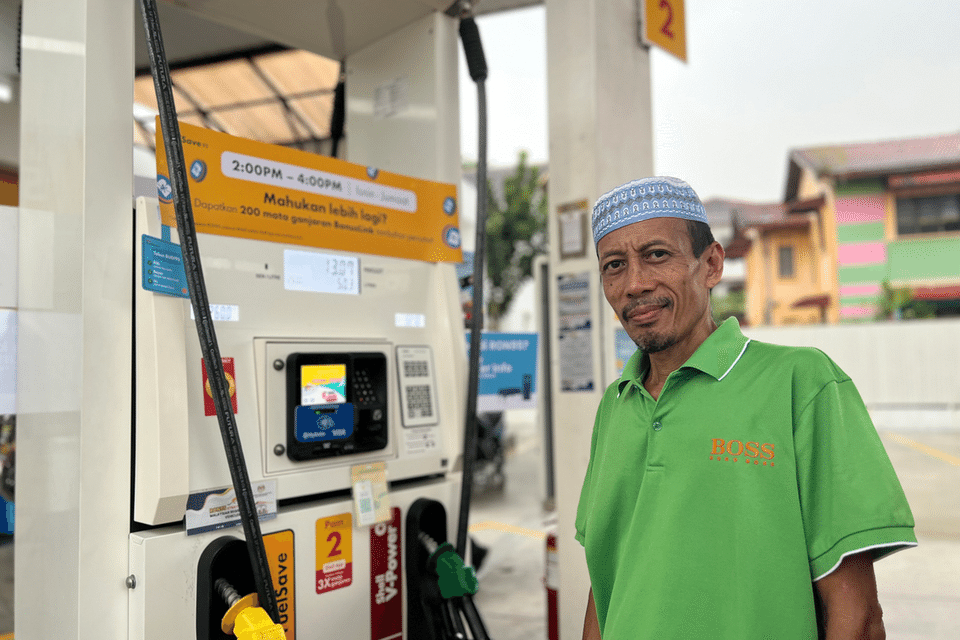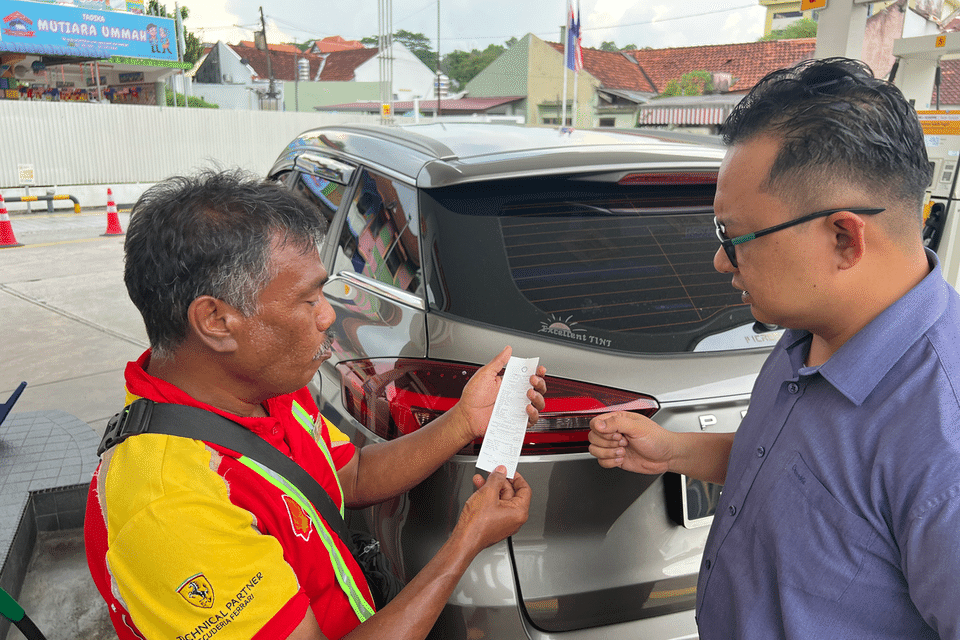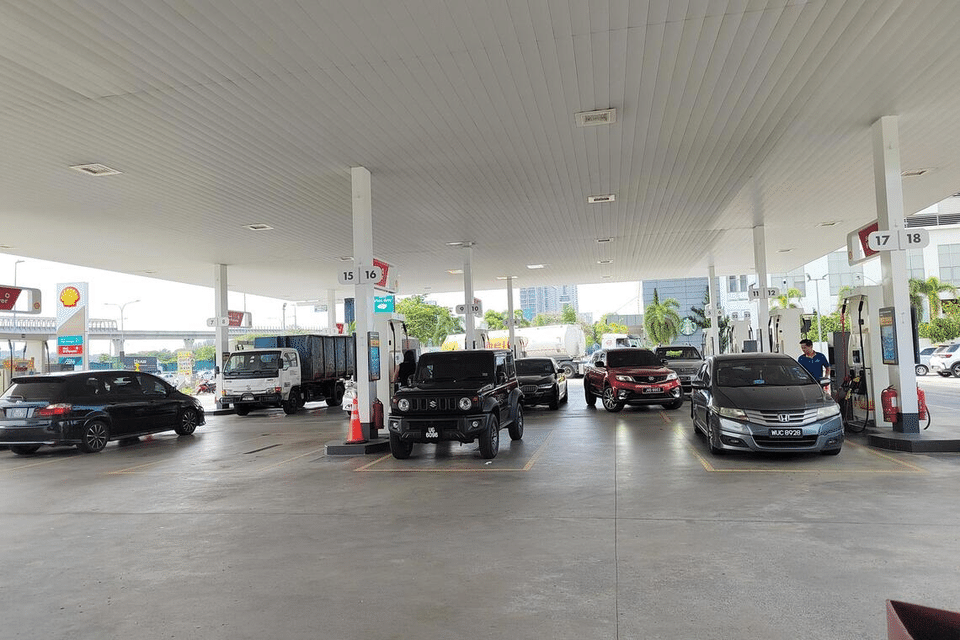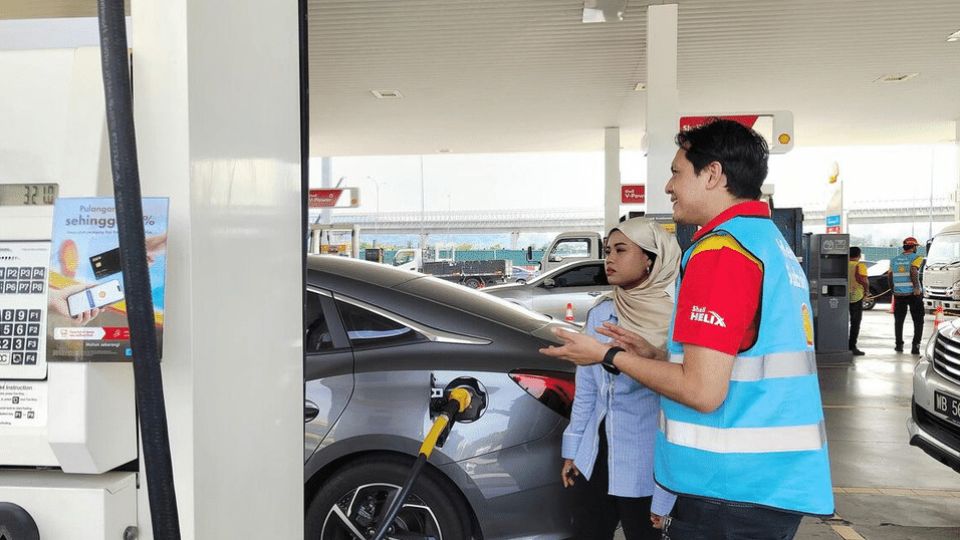October 1, 2025
KUALA LUMPUR – Malaysia will set up a registration system for its citizens who hold Singapore driving licences, as they currently cannot enjoy the new subsidy scheme for RON95 petrol implemented nationwide on Sept 30.
According to the Transport Ministry, the system will allow Malaysians who have surrendered their Malaysia licences for Singapore permits to meet work requirements there to also take advantage of the scheme.
The system is expected to take two weeks to complete, and until then, the Malaysians affected will not be able to enjoy the subsidy. While the exact number is unknown, Transport Minister Anthony Loke noted that between 200,000 and 250,000 Malaysians cross into Singapore daily for work.
“They are entitled to the subsidy. In principle, they are Malaysians and live in Malaysia. The only thing different is that they hold Singapore driving licences,” Mr Loke told a press conference at his office in Putrajaya on Sept 30.
“But we need a bit more time because the data kept by the Singapore authorities is not integrated with ours,” he added, explaining that privacy laws in Singapore prevented data sharing with Malaysia’s Road Transport Department.
Under the new scheme called Budi95 announced on Sept 22, Malaysians can buy RON95 fuel at RM1.99 (60 Singapore cents) per litre, capped at 300 litres a month. In comparison, non-citizens pay RM2.60, while those with foreign-registered vehicles can buy only the premium RON97 petrol.
The roll-out on Sept 30 went smoothly for the most part. However, The Straits Times observed that several motorists were confused by the price displayed at the pump, and what they actually had to pay.
At a Shell station in Sungai Besi, around 20 minutes’ drive south of Kuala Lumpur, retiree Liew Boon Siew, 70, said he was unsure if he had been overcharged.
“I wanted to pump RM50 worth of petrol, then I looked at the pump, it showed RM60. I don’t understand how the subsidy works,” he said, later realising the pump displayed the unsubsidised price of RM2.60 before the rebate was applied.
Another motorist, Ms Christine Chan, was upset when her bill reflected the higher price.
“I am Malaysian. Why must I pay RM2.60 per litre? Where is my subsidy?” she asked, before a station attendant explained that the pump displayed the unsubsidised price before the rebate was applied.
In downtown Johor Bahru, pump attendants were similarly busy assisting drivers as they either scanned their Malaysian identity card at the pump kiosks or showed it at the counter for verification. A help kiosk was also available for additional support.
A common issue among drivers was confusion over receiving more fuel than expected.
When asked about this, pump attendant Ishak Othman, 49, explained that the pump systems charge fuel at the non-discounted RM2.60 per litre rate. The subsidy is applied after the tank is filled, so drivers effectively receive some extra fuel based on the difference between the subsidised price and the full price.
“For example, if you paid RM100 at the counter using subsidies, the pump system will pump RM130.65 worth of fuel under the non-subsidised price. It will be billed back to the driver as RM100,” Mr Ishak clarified.
Retiree Mohd Nasir Aris, 63, said he was surprised when he saw that his bill showed he received RM13.07 worth of fuel, but only paid RM10 for it.
“I would’ve paid more if I had known,” he joked.

Retiree Mohd Nasir Aris, 63, said he was surprised when he saw that his bill showed he received RM13.07 worth of fuel, but only paid RM10 for it. PHOTO: THE STRAITS TIMES
Medical officer Mohd Razmi Mohd Shah, 40, was confused when he received RM130.65 worth of fuel after paying RM100. He ended up with about 50 litres of fuel for his Proton SUV.
Before the Budi95 scheme, Mr Razmi said he would typically get around 48 litres for RM100 when RON95 was priced at RM2.05 per litre. Under Budi95, he received about 2 litres extra.
“It’s still a bit confusing, but I’m getting more fuel than usual so that’s a good thing,” he remarked.

Pump attendant Ishak Othman explaining the bill to Mr Mohd Razmi Mohd Shah at a Shell pump station in Johor Bahru on Sept 30. PHOTO: THE STRAITS TIMES
Petrol station operators said they had anticipated the confusion. The scheme had already been rolled out to security forces and drivers from lower-income households on Sept 27.
Mr Syahrir Reza Ahmad Fuad, 42, who runs a petrol station in Kuala Lumpur, said he had prepared his staff months in advance of the new scheme.
“We worked on logistics and made sure we had more manpower during peak hours to educate customers about why there is a price difference from what they are actually charged.
“And we’ve been preparing for this day for months, with training and testing to make sure the system runs smoothly,” he told ST.

The Budi95 scheme roll-out went smoothly as petrol station operators were well-prepared for it. PHOTO: THE STRAITS TIMES
Thus far, officials said just 0.88 per cent of eligible Malaysians – or fewer than 75,000 people – have been unable to access the subsidy because of outdated identity cards or unrecognised police and military IDs.
“The Budi95 system cannot recognise that data so it must be updated with the current information like new identification card numbers and civilian IDs for police and military retirees.
“They are entitled but because they did not update their data they may not be able to enjoy the subsidy yet,” said Mr Loke.
The government also disclosed that more than 878,000 foreigners, including 18,000 permanent residents, hold Malaysian driving licences but will not be entitled to subsidies.
Since the scheme’s launch, daily licence renewals have surged nearly 50 per cent, from 17,000 to 27,000, according to RTD.
The government has also not announced an extended quota for e-hailing drivers and riders.
Malaysia spends heavily on subsidies, which hit RM80 billion in 2023, with petrol support taking up nearly a quarter of the total. In 2022, the fuel subsidies cost the government RM52 billion, about 74 per cent of the subsidy bill that year.
The government expects Budi95 to save RM2.5 billion to RM4 billion annually by better targeting fuel subsidies for citizens.
Sign up for our weekly Asian Insider Malaysia Edition newsletter to make sense of the big stories in Malaysia.

